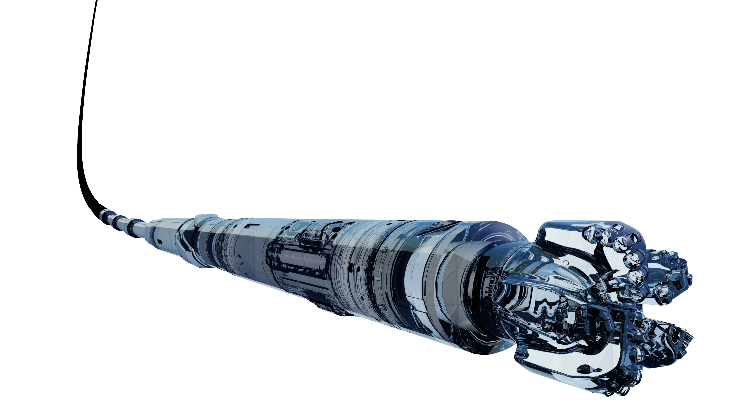Directional trajectory prediction using drill bit steerability models within a steering control system for deep earth drilling

General: Drilling for oil and gas is becoming more and more complex. A precise steering control of the well is required to maximize reservoir contact for increased production and to assure consistent quality of the wellbore. Technologies like rotary steerable systems (RSS) enable drilling of complex three-dimensional wells. Typically, wells are not just vertical but have long horizontal sections for increased reservoir contact which may extend over several kilometers. A steering device which is placed behind the bit is used to control the borehole trajectory. The steering device of Baker Hughes uses three hydraulically actuated ribs which are pushed against the borehole wall to create a directed force. This force deflects the drilling system in the desired direction. The characteristics of the drill bit influence significantly the responsiveness of the drilling system to these forces. Therefore, the bit characteristics need to be incorporated in a trajectory drilling control system.
Topic: In this master thesis the influence of the drill bit characteristics on the steering behavior within a steering control system has to be investigated.
The drill bit design defines considerably, whether a bit is capable of cutting only in the bit tilted angle direction or whether a cutting force is acting in other directions, too. Many factors are affecting the bit trajectory – some of these are tied to the bit design, others are tied to operational conditions. For a reliable prediction of the steering behavior of the downhole Bottom Hole Assembly (BHA) the resultant bit-rock interaction has to be modeled using real-time drilling data and drill bit design characteristics. The BHA is the lowest part of the drill string, extending from bit to drill pipe.
The master thesis entails the following steps: First, a literature study has to be conducted to get an overview of state of the art drill bits, and an understanding of their steering behavior.
Second, the relevant drill bit parameters influencing the steering behavior have to be identified.
Third, a real-time capable adaptive grey box model of the drill bit steering behavior has to be developed in Matlab/Simulink. Unknown free parameters need to be estimated using system identification techniques. The robustness of the model against inaccurate measurements has to be analyzed. A simulation model of the drilling system and drill bit data will be provided. Appropriate test cases have to be defined that can be used for the comparison and evaluation of the steerability models.
Fourth, the drill bit steering model has to be integrated within Baker Hughes’ trajectory drilling framework and the interaction with trajectory control algorithms has to be evaluated. This includes also a stability analysis of the control system.
The work will be conducted at Baker Hughes INTEQ GmbH in Celle, Germany. The work will be supervised jointly by the Institute for Automation Engineering (IFAT), Otto-von-Guericke University Magdeburg and Baker Hughes.
Topic Area:
Helpful/Required Prerequisites:
Experience with: MATLAB, Simulink
Language: German or English